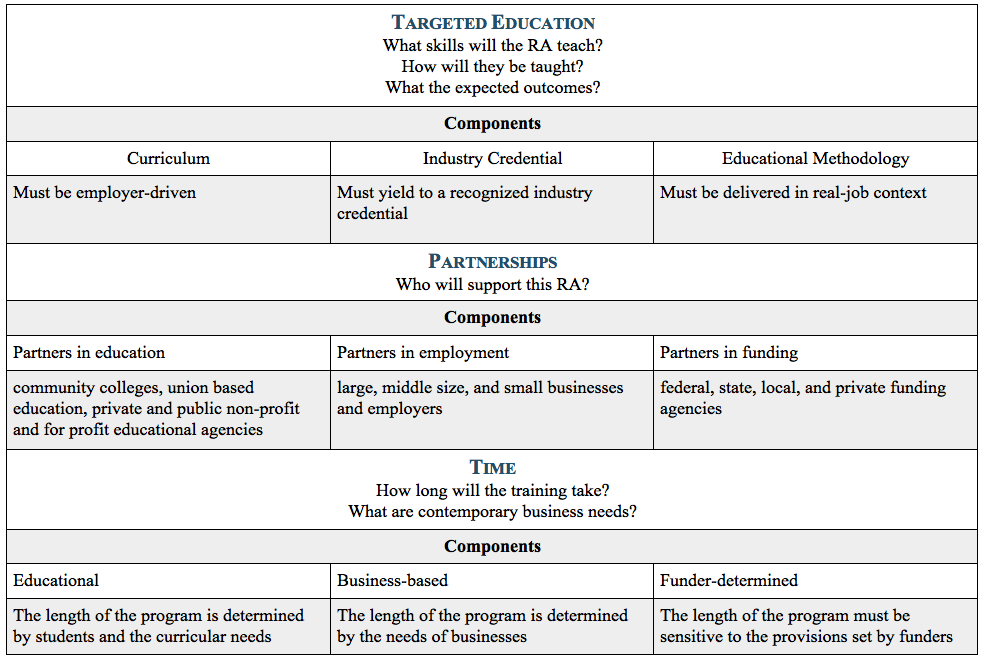Targeted Education
Education in RA should always be targeted to the profession that it is preparing students for. The educational targets are determined by multiple stakeholders in an RA program.
Guiding questions for planning:
What skills with the RA teach?
What the expected outcomes?
How will it be taught?
Components:
Curriculum: must be employer-driven to deliver 21st century education for employment skills.
National Credential: must result in a nationally recognized industry credential.
Pedagogy: must be inclusive and contextualized to meet employment requirements and skills.
Partnerships
Partnerships are the backbone of the RA system. All partners in an RA program have the same general two-part goal: to help student/participants meet their goals - and to meet the goals of the businesses. Ongoing cooperation and communication amongst the partners is crucial to the success of the program.
Guiding questions for planning:
Who will support this RA?
How will you initiate the partnership?
Components:
There could be many partners in this process, but often we find these three:
Partners in education: community colleges, union based education, private and public non-profit and for profit educational agencies.
Partners in employment: large, middle size, and small businesses and employers.
Partners in funding: federal, state, local, and private funding agencies.
Time
Time is a crucial factor of RA because the program must meet expectations of all stakeholders. Three main partners all must have an input in deciding the length of the program.
Guiding questions for planning:
How long will the training take?
What are current business needs?
Components:
Educational: the length of an RA can be determined by the industry (the skills needed to be learned and by the students (accommodated learning sometimes takes longer); education should be delivered in the way that best teaches competencies and skills needed for the job.
Business-driven: businesses must communicate their changing needs and all partners should be responsive and timely.
Funder-determined: the program’s length must include the time provisions given by funders.


